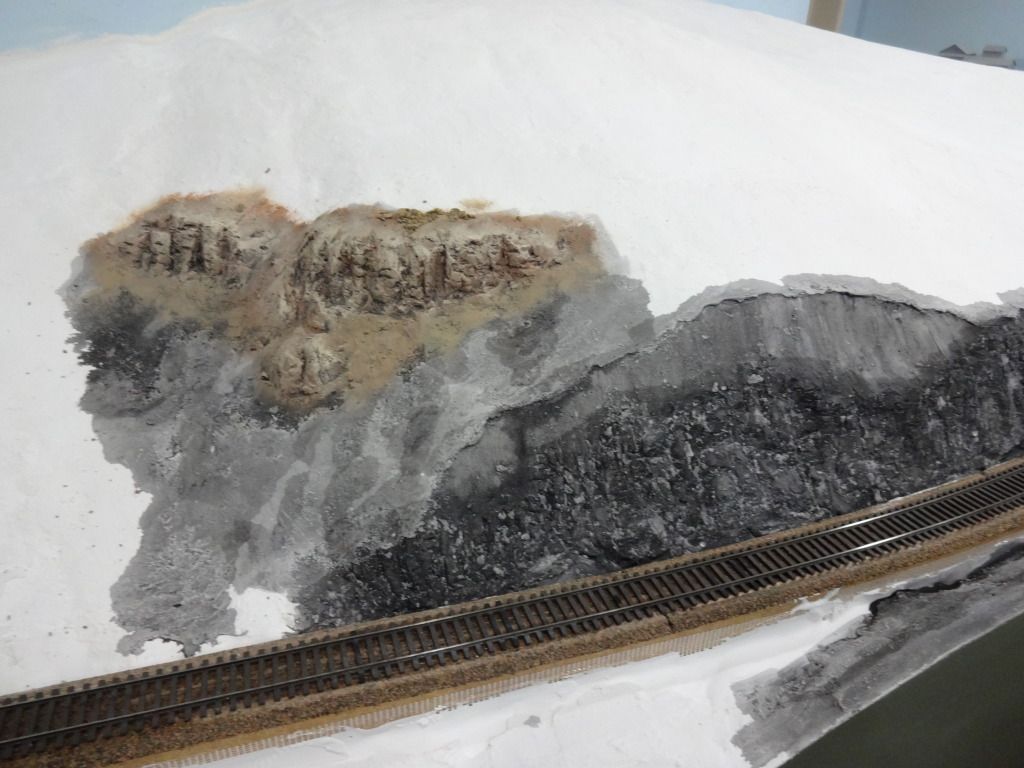Just finished the framework and applied the first thin coat of plaster to my new mountain. Would like to have a medium tan color look. What color of craft paint could I add to the final plaster of paris mix to give me this look. Plus also adding a small amount of vinegar to the mix be okay ?
You could add tempera powder, masonry dye powder or liquid, or even craft paint. If you go to Wal Mart, as an example, and see the selection of acrylic craft paints in their crafts section, you’ll have a numer to choose from. There is a ‘tan’, for example. I use powdered masonry dyes, but in a combination of two. I use ‘brown’ and ‘mesa’. It doesn’t take a lot of the dye powder, and you’ll have to experiment with the paint. It will dry lighter than it looks when wet in either case.
Crandell
I
I generally just paint my plaster, but there are several ways of coloring it if you want to. Powdered tempura works well, but any water-soluble paint will work.
As far as vinegar goes, that’s a tried and true method of extending the working time of plaster. Go ahead and do it if your plaster is setting up too fast for you.
I’ve never had much luck getting coloring in the plaster mix to do the job, nor have I seen many attempts to do so that turned out well. You may get other responses that will describe satisfactory ways to add color to the plaster, but I do this…
First, I add a small amount of black acrylic craft paint to some water, and flood the plaster rocks with it. I like to go fairly dark with it as it will lighten up some over a few days as it completely soaks in and dries. I have no idea what the ratio is, as by now I just know by looking how much wil work. Experiment and see what you like.
I add color to the rocks by dry-brushing full-strength acrylic in two or three passes, starting with darker colors and moving toward lighter ones. A look through the craft paint rack should turn up several possibilities.
Here’s the same location with all the rock color applied. Again, the black wash lightens so it’s good for it to appear dark at this stage.
The last coloring step I do is to paint flat earth color latex everywhere I don’t have rock. If you aren’t modeling rock, you can skip straight to the latex. This works for me, and is fast, cheap and fairly simple.
great tutorial/pictorial Rob ,thanks Jerry
Just as Selector, I use powdered masonry dyes, It is not that difficult to use or obtain the coloring needed. These dyes are formulated to work w/ masonry products and have no ill effects of the properties of the plaster. To color, you need to add the dye to “dry” plaster. The color of the dried “blend” will be very close to the end result of the final dried/ cured plaster. Think of Tile grout, light tan/ brown will look like chocolate once wet. Dried it returns to the lighter color.
The overall base coloring of these rocks is the colored plaster, only minor washes and added coloring of drybrushing
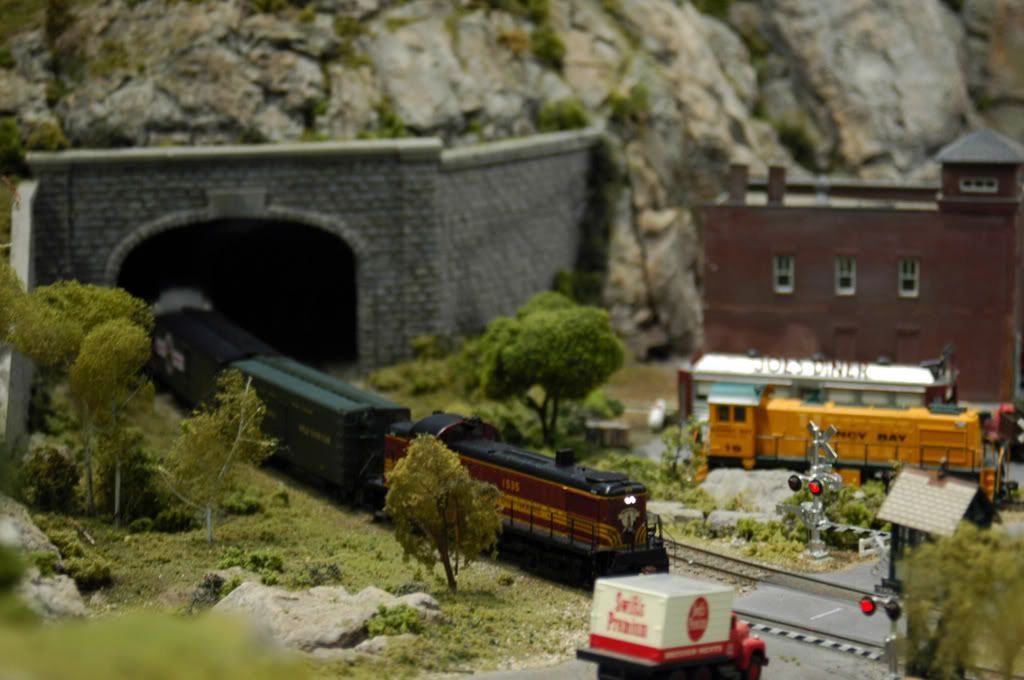
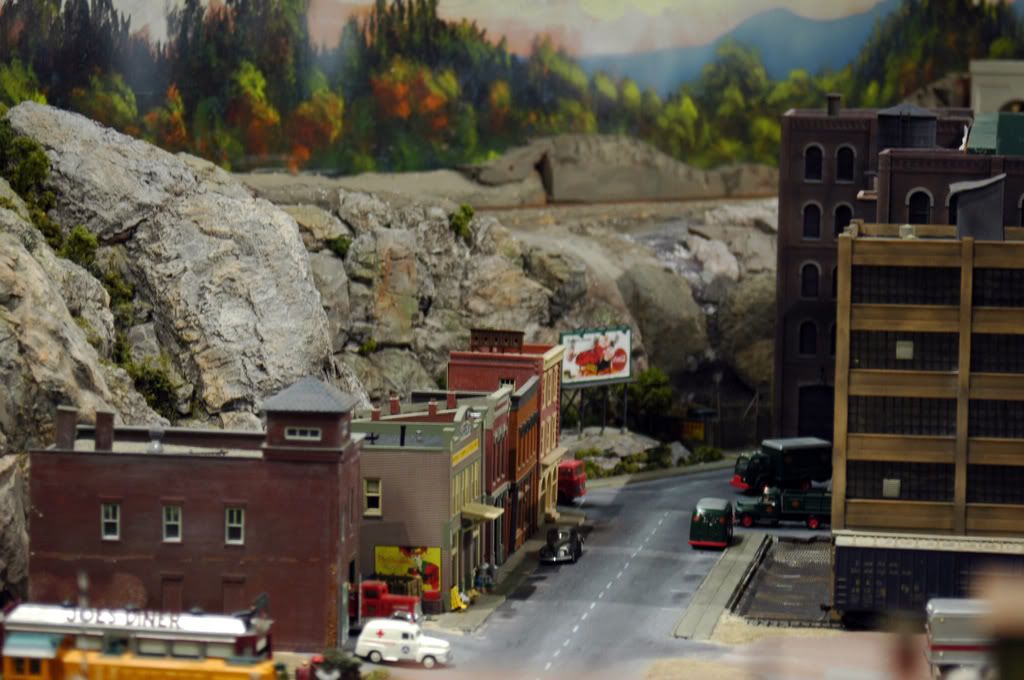
This is also done for the roads as well.
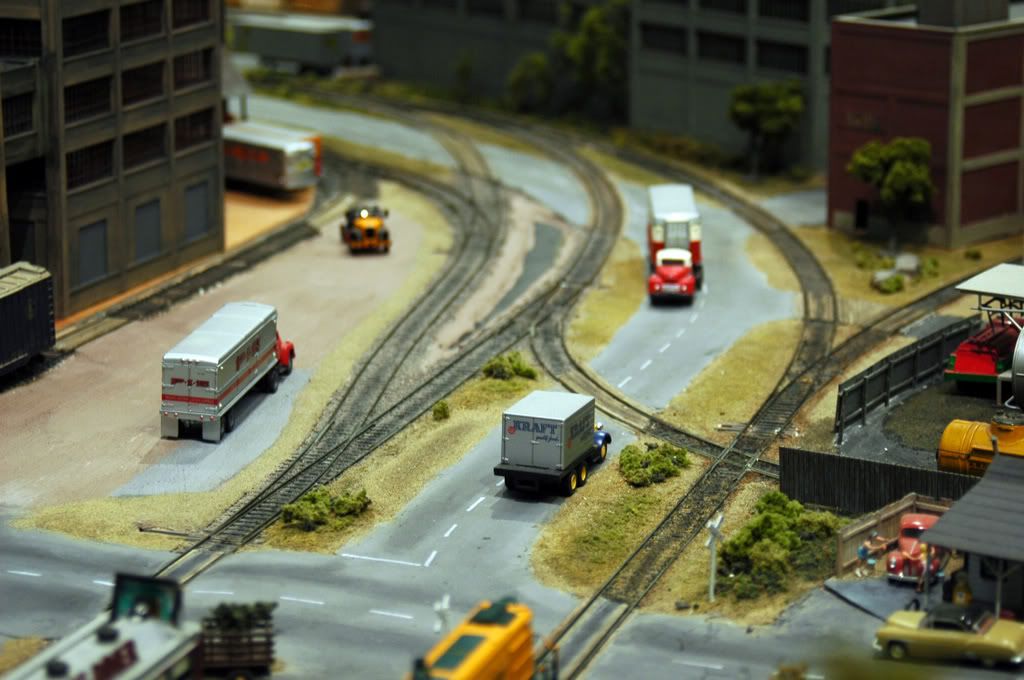
90% of the coloring seen here on the pier and abutment is dye (black and brown mix)
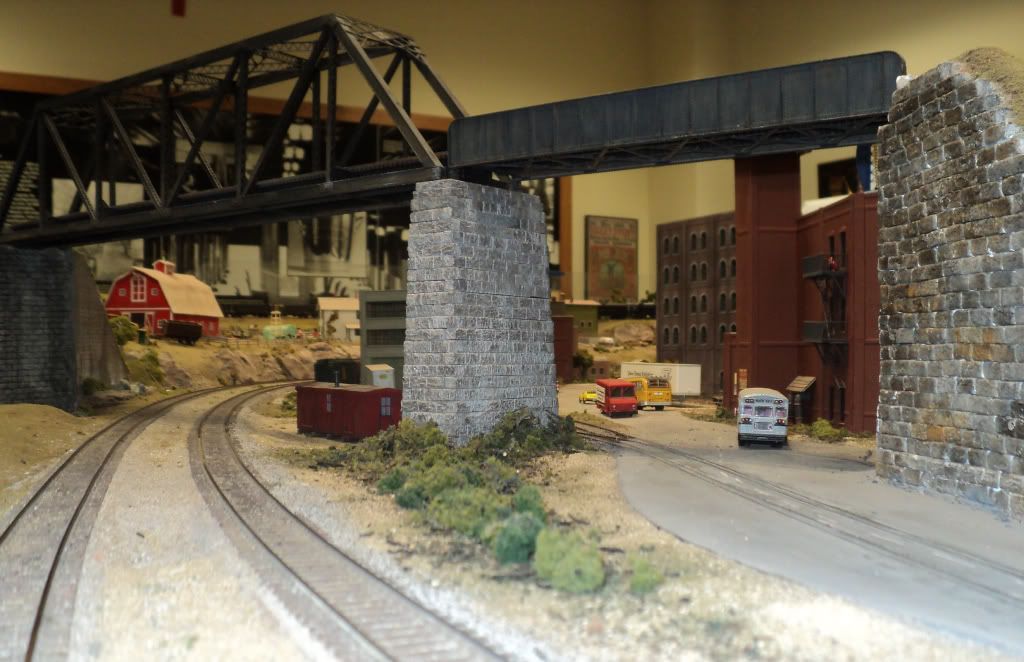
One of the main reasons i will use the dyed castings is this is a club setting where much of the castings can see some abuse during shows and open house. I have carved or broken castings and very little final weathering/ coloring is needed.
I have found through experimentation, that those Sacrete liquid colors as does paint will only color very slightly w/o having to add quite a bit of color.
One thing you should NEVER use to color plaster as it’s being mixed is latex house paint – unless you want the plaster to set up hard in the mixing bowl within 10 seconds!
Chemical reaction between these two causes the plaster to set very quickly.
Acrylic craft paints from Wal-mart, etc. don’t have this reaction.
I have used food coloring successfully in my cheap days. The color did lighten from the mix to when it was dry. But I found that coloring the plaster was only a very small 1st step. Getting a uniform tan color is only a first improvement over white plaster. Painting plaster with thin washes of craft acrylics and dry brush techniques really makes the difference, as has been shown in this thread.
my thoughts, your choices
Fred W
